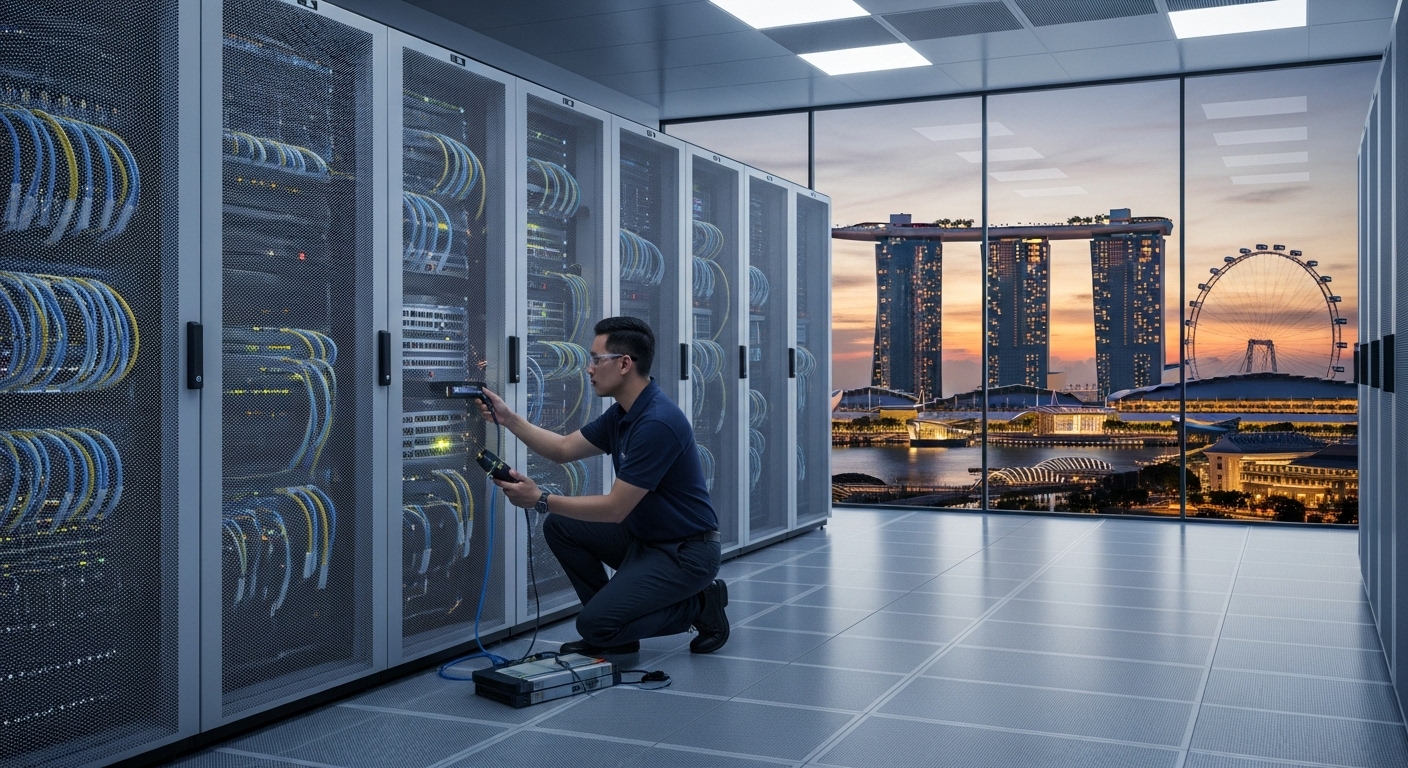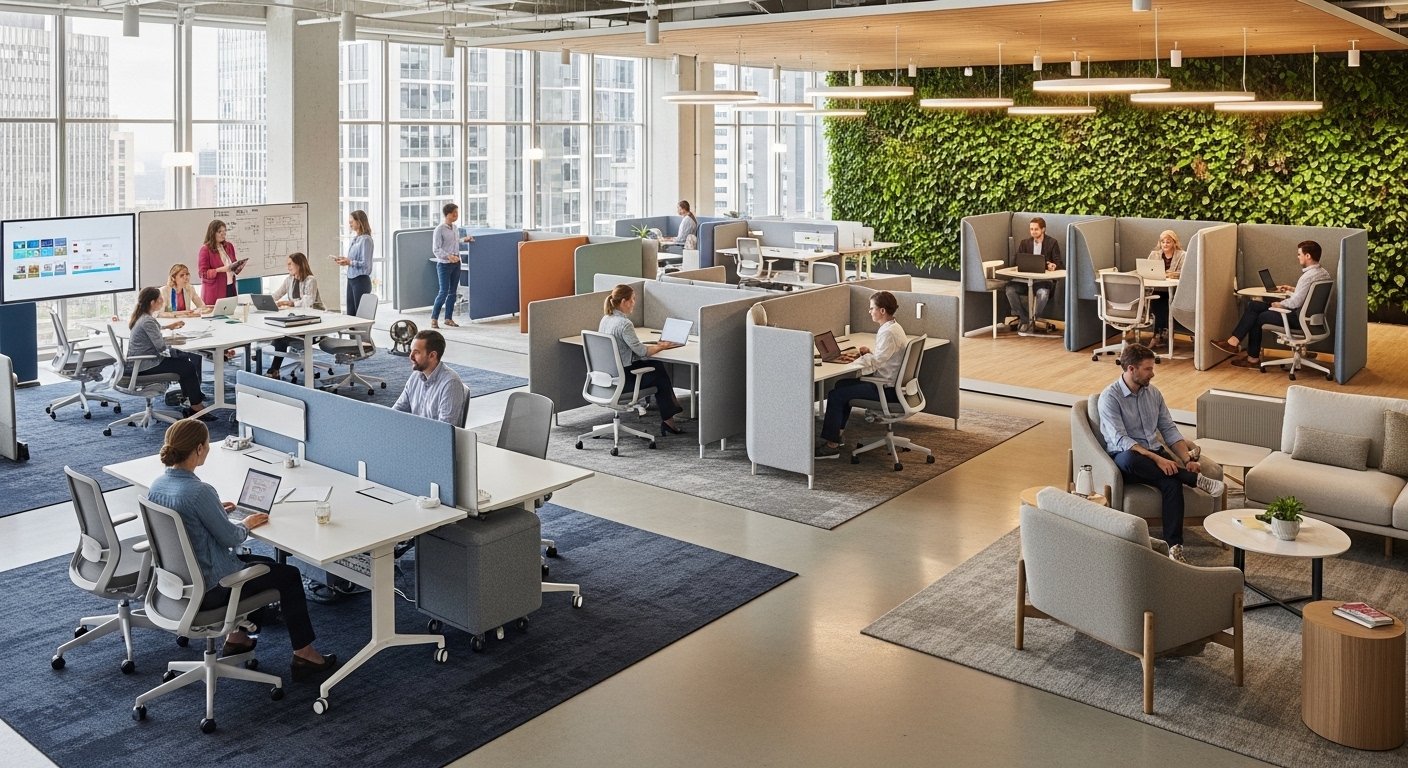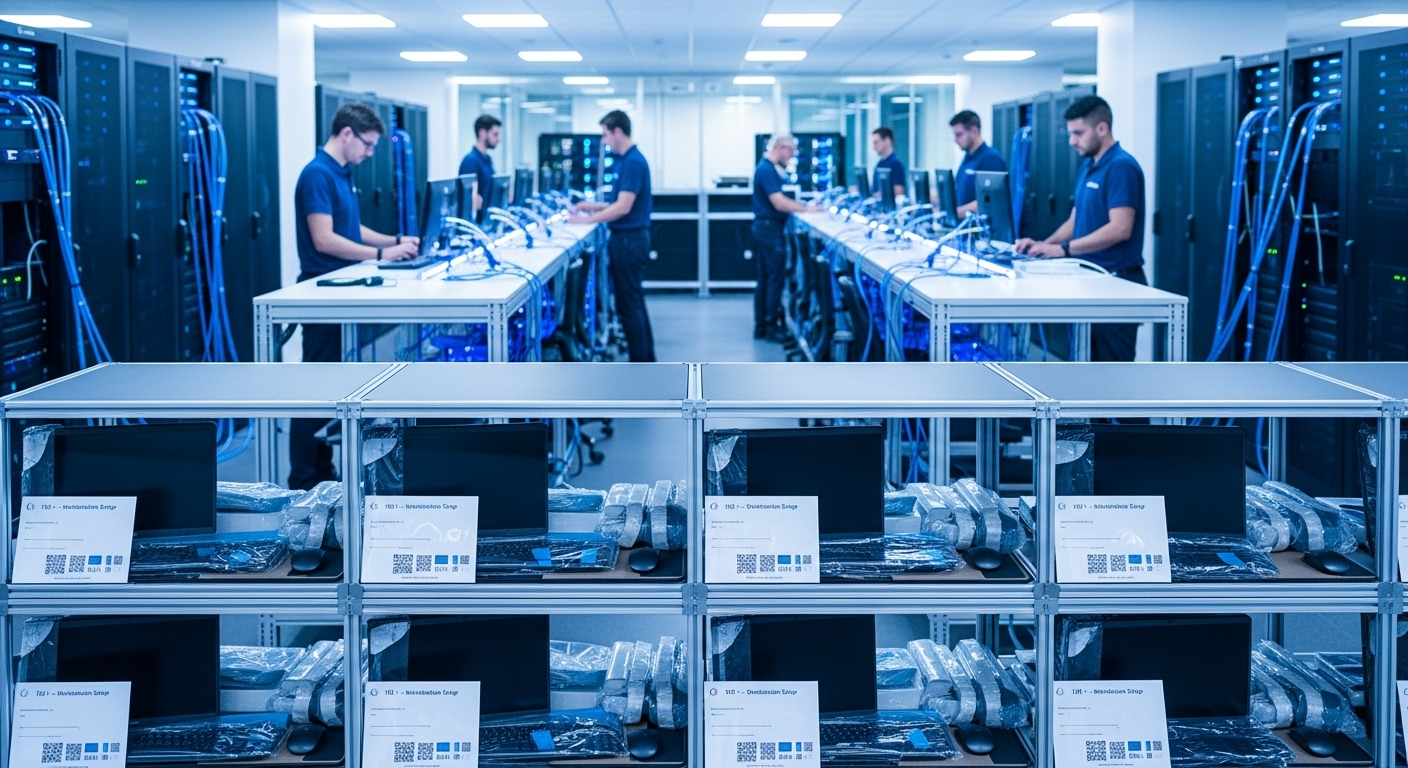Launching a new office in a global commercial hub is a high-stakes endeavor where first impressions are critical. The concept of ‘Zero-Day Readiness’—being 100% operationally effective from the moment you open your doors—is no longer a luxury but a baseline expectation. In a dynamic and technologically advanced district, your IT infrastructure is not merely a support function; it’s the central nervous system of your entire operation and a powerful competitive advantage. A flawed IT rollout can lead to costly downtime, decreased productivity, and a tarnished reputation before you’ve even begun. This guide provides a strategic framework for mastering the complex logistics of IT setup, ensuring your business launches with seamless efficiency and a robust digital foundation. We will navigate the critical stages, from initial blueprinting and vendor selection to infrastructure architecture, cybersecurity implementation, and final deployment, providing a comprehensive playbook for a flawless launch.
The strategic blueprint: planning for resilience and scale
The foundation of a successful IT launch is a meticulously crafted strategic blueprint that extends far beyond a simple equipment checklist. This initial planning phase requires a deep alignment between your technology framework and your long-term business objectives. Before a single cable is run, you must conduct a thorough needs assessment. What are your operational requirements today, and how do you anticipate they will evolve over the next three to five years? Planning for scalability from day one prevents costly and disruptive upgrades down the line. This involves forecasting data storage growth, user expansion, and the potential adoption of new technologies. For businesses establishing a presence in a premier financial and tech hub like Marina Bay, this foresight is paramount. The demands of high-frequency trading firms, data-intensive tech companies, and global consultancies require an infrastructure built for peak performance and unwavering reliability. Your budget should reflect this, prioritizing investment in resilient, high-quality hardware and systems over short-term savings that could introduce long-term vulnerabilities. A detailed project timeline with clearly defined milestones, dependencies, and stakeholder responsibilities is the final pillar of this blueprint, transforming your strategic vision into an actionable plan.
Vendor selection and management: building your A-team
Your IT infrastructure will only be as strong as the partners you choose to build it. Selecting the right vendors is one of the most critical logistical challenges in an office setup. Your ‘A-Team’ will likely consist of multiple specialists, including structured cabling installers, internet service providers (ISPs), hardware and software resellers, and potentially a managed IT services provider (MSP). When evaluating potential partners, look beyond the price tag. Prioritize vendors with proven experience working within high-specification commercial buildings, as they will be familiar with the unique access protocols, building regulations, and logistical complexities. Request case studies and references from companies in your industry or locality. For ISPs, investigate their network resilience, service level agreements (SLAs), and the diversity of their physical network paths into the building to mitigate outage risks. For hardware procurement, a good partner can advise on the best equipment for your needs and navigate complex supply chains to ensure timely delivery.
“Choosing a vendor with deep local expertise was a game-changer for us. They understood the building’s infrastructure intimately and had existing relationships with management, which saved us weeks of potential delays and bureaucratic headaches.”
A well-defined scope of work and clear communication channels are essential for managing these relationships effectively, ensuring every component of your project is delivered on time and to specification.
Architecting the physical layer: cabling, connectivity, and server rooms
The physical layer is the unsung hero of your IT infrastructure. A robust and well-organized cabling plant is essential for reliable network performance and future scalability. Opting for high-grade structured cabling, such as Cat6A or Cat7, supports 10Gbps speeds and beyond, future-proofing your office for next-generation applications. Fiber optic backbone cabling should also be considered for connecting server rooms to network closets across different floors, ensuring maximum throughput and reliability. The design of your server room or network closet is equally critical. It must be a secure, climate-controlled environment with adequate power and cooling capacity to support your equipment. Key considerations include redundant power sources via an uninterruptible power supply (UPS) and potentially a backup generator, efficient cooling systems to prevent overheating, and robust physical security measures like keycard access and surveillance. The logistical coordination required at this stage is immense, involving close collaboration with architects, general contractors, and building management to ensure that pathways for cables are available, power requirements are met, and all installations comply with local building codes and safety standards. Meticulous planning here prevents major headaches and performance bottlenecks later.
The cloud and on-premise hybrid: designing your digital infrastructure
With the physical foundation in place, the focus shifts to designing the digital architecture that will power your business. Today’s organizations have a spectrum of choices, from fully on-premise servers to a 100% cloud-based model, with a flexible hybrid approach sitting in between. The optimal strategy depends entirely on your specific business requirements, including data security, compliance regulations, application performance needs, and budget. A fully cloud model offers scalability and reduces capital expenditure but may raise concerns about data sovereignty or latency for certain applications. On-premise infrastructure provides maximum control but requires significant upfront investment and ongoing maintenance. For many businesses, a hybrid model offers the best of both worlds. This approach allows you to keep sensitive data or latency-critical applications on local servers while leveraging the public cloud’s scalability and cost-effectiveness for other workloads. The world-class digital connectivity available in a location like Marina Bay makes sophisticated hybrid cloud strategies particularly effective, offering high-speed, low-latency links to major cloud providers like AWS, Azure, and Google Cloud. This enables seamless integration between your private and public cloud resources, creating a powerful, flexible, and resilient digital ecosystem.
Cybersecurity from the ground up: securing your digital fortress
In today’s threat landscape, cybersecurity cannot be an afterthought; it must be a foundational principle woven into the fabric of your IT setup from day one. Establishing a new office provides a unique opportunity to build a secure environment from the ground up, rather than retrofitting security measures onto an existing infrastructure. A multi-layered security strategy, often referred to as ‘defense in depth,’ is the most effective approach. This begins at the network perimeter with a next-generation firewall (NGFW) that provides advanced threat prevention, intrusion detection, and application control. Inside the network, secure Wi-Fi deployment is crucial. This means creating separate, isolated networks for corporate users, guests, and sensitive IoT devices to prevent unauthorized access. Endpoint security is another critical layer, requiring robust antivirus, anti-malware, and endpoint detection and response (EDR) solutions on all laptops, desktops, and servers. Beyond technology, security also involves people and policies. Implement strong access control policies based on the principle of least privilege, ensuring employees only have access to the data and systems necessary for their roles. Enforce strong password requirements and multi-factor authentication (MFA) wherever possible. For businesses handling sensitive client data, the reputational and financial risks of a breach are immense, making a proactive, security-first mindset a non-negotiable part of your IT launch.
The final mile: deployment, testing, and day-one support
The final phase of your IT setup is where strategy and planning translate into a functional reality. This ‘final mile’ involves the physical deployment of all hardware, the installation and configuration of software, and the setup of user accounts and permissions. A systematic and organized approach is essential to avoid chaos. Hardware such as desktops, laptops, printers, and VoIP phones should be unboxed, asset-tagged, and deployed to their designated locations according to the floor plan. Once deployed, a comprehensive testing plan must be executed with military precision. This isn’t just a quick check to see if a computer turns on. It involves systematically testing every network port, validating internet speeds and Wi-Fi coverage across the entire office, confirming access to all critical business applications, and conducting a test run of your data backup and recovery procedures. This meticulous testing phase is your last chance to identify and resolve any issues before your staff arrives. Finally, plan for dedicated, on-site IT support for the first week of operations. No matter how perfect the plan, minor issues and user questions are inevitable. Having an expert on hand to provide immediate assistance ensures a smooth and positive technology experience for your team, cementing the success of your launch and setting the stage for productivity from day one.
In conclusion, achieving ‘Zero-Day Readiness’ is a complex but achievable goal that hinges on a strategic, detail-oriented approach to IT setup and logistics. It requires moving beyond a simple procurement mindset to one of architectural design, where every decision—from the cabling in the walls to the cloud services you adopt—is made with an eye toward future growth, resilience, and security. The journey involves meticulous blueprinting to align technology with business goals, the careful selection of expert vendors to form a reliable project team, and the thoughtful design of both physical and digital infrastructures. Layering in a robust, security-first framework from the outset protects your most valuable assets. The final, critical phase of exhaustive testing and on-site support ensures that when the doors open, your technology works flawlessly for your team. For any company launching in a highly competitive and prestigious district such as Marina Bay, a seamless IT deployment is not just an operational success; it is a powerful statement of competence and a critical foundation for sustained growth and innovation.





